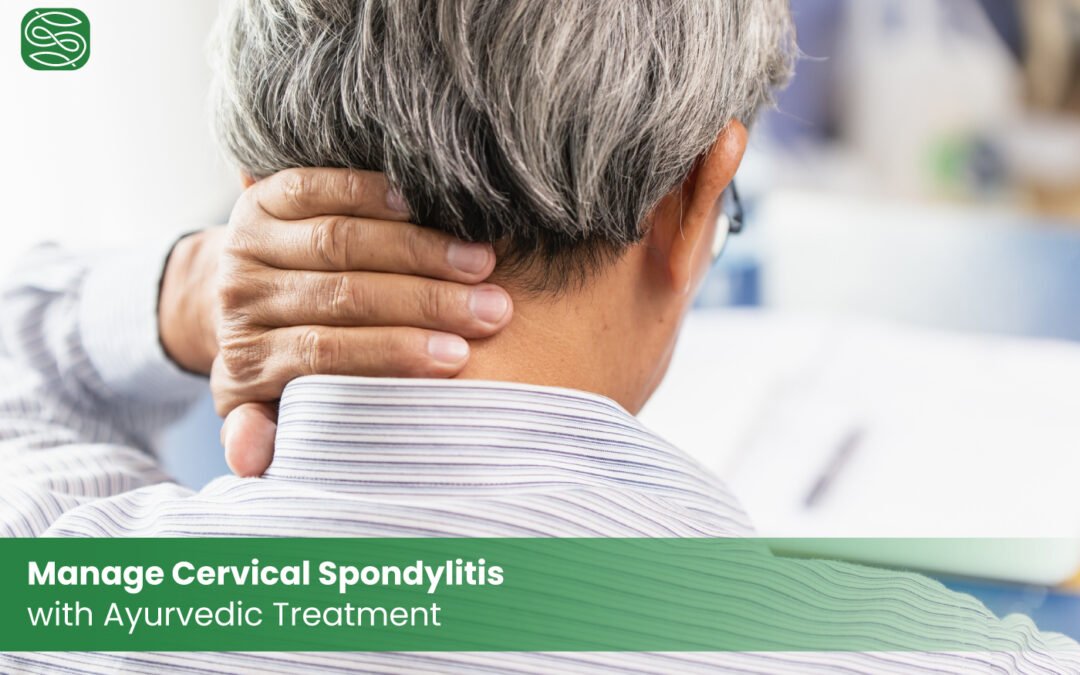What is Cervical Spondylitis?
Cervical Spondylitis is a chronic inflammatory condition characterized by inflammation of the vertebrae. It can lead to severe pain and stiffness in the spine and neck, and over time, it can result in the fusion of spinal bones, affecting flexibility and posture.
Changes in the spine are considered natural as we age. With age, the spine most likely begins to wear down. Most adults over the age of 60 have Cervical Spondylitis and Osteoarthritis, which can be observed in neck X-ray findings. A vast majority of these people initially show no symptoms. When symptoms emerge, nonsurgical therapies are typically helpful.
Ayurveda describes cervical Spondylitis as related to Greeva Stambha, a vata dosha condition. Vyana Vayu is in charge of the body’s movements.
Causes of Cervical Spondylitis
As people age, the structures that make up the backbone and neck gradually wear and tear.
The causes include:
Bone Spurs: Bone overgrowth occurs when the body uses more bone to strengthen the spine. However, the excess bone can pressure-sensitive nerve sections of the spine, including the spinal cord and spinal nerves, causing pain.
Dehydrated Discs: Thick, pad-like discs that separate the spinal bones from one another absorb the force of lifting, twisting, and other movements. The lubricants inside these discs can dry out with age, causing the spinal bones to rub together more, which can be uncomfortable.
Herniated Disks: Cracks in spinal discs can release internal cushioning fluid. This substance can compress the spinal cord and nerve roots, causing symptoms like numbness and discomfort radiating down an arm.
Stiff Ligaments: Ligaments play a crucial part in the human body. The cords that link your spinal bones might stiffen even more with age, limiting neck movement and making the neck less flexible.
Occupational Factor: Some jobs or pastimes require heavy lifting and repetitive neck movements. Nowadays, leading a sedentary lifestyle strains the spine and causes the neck bones to deteriorate earlier.
Symptoms of Cervical Spondylitis
Cervical Spondylitis often begins with no symptoms at all. Symptoms such as stiffness and soreness in the neck appear gradually. Spondylitis can sometimes narrow the space needed for the spinal cord. This condition affects the nerve roots extending from the spine to other body parts. If the spinal cord or nerve roots are pinched, you may feel:
- Tingling Sensations, numbness, and weakness in the neck can travel to the arms, hands, legs, or feet.
- Muscle and Bone Coordination Issues
- Difficulty walking
- Loss of bladder or bowel control.
- Neck grinding sensation.
- Neck stiffness.
- Trouble Maintaining Balance.
Ayurvedic Medicines for Cervical Spondylitis
According to Ayurveda, the symptoms of spondylitis are caused by Vata Dosha. Ayurveda offers several therapies for spondylitis that address the ailment organically.
Ayurvedic treatment for Neck pain can be done with a variety of herbs. These Ayurvedic herbs effectively regulate the vata dosha. They aid in reducing inflammation and pain. When kapha is lowered, stiffness decreases automatically. Ayurvedic medications for cervical spondylitis include:
Shallaki: Its anti-inflammatory qualities help to keep joints from swelling and cartilage from breaking down.
Rasna: Its oil is beneficial since it relieves joint and bone pain.
Guggulu: Guggulu lubricates and rejuvenates the tissues inside and around the joints, allowing for more comfortable mobility in narrow places.
Guduchi: Guduchi stems can help with inflammation and cervical spondylosis. It also alleviates joint pain and other arthritis-related symptoms.
Ashwagandha: Ashwagandha has anti-arthritic effects and relieves pain by relaxing the nervous system.
Shunthi: It reduces swelling, joint discomfort, stiffness, rheumatoid arthritis, and cervical Spondylitis
Panchakarma Treatment for Cervical Spondylitis
For treating cervical spondylosis, Following Ayurveda therapies are beneficial.
Abhyanga swedam: Abhyanga Swedam is a traditional Ayurvedic body massage using individual, seasonal, and medicated oils. A scrub and herbal steam bath (Sweda) follow it. Sweda helps open the skin’s pores and expel pollutants.
Shirovasti or Shirodhara: Shirodhara is a soothing and therapeutic head massage with numerous mental and physical perks. It primarily involves putting medicinal oil across the forehead. It is the most effective Ayurvedic treatment for cervical pain.
Sarvangadhara: Sarvangadhara is the most effective Ayurvedic treatment for neck discomfort and back pain. It depends on the patient’s Dosha, particularly their internal body type. It helps to treat degenerative disorders like arthritis and cervical spondylosis, as well as muscular pain and joint stiffness.
Greeva Basti: Greeva Basti is the most popular Ayurvedic treatment for Neck Pain. It resembles therapeutic oils poured for a set period and helps treat sprains, strains, headaches, and neck pain.
Nasya : Lubrication of Nasal Passage and Neck Joints. The herbal oils used in Nasya help lubricate the nasal passage and the joints in the neck, providing relief from stiffness and pain associated with cervical spondylitis.
Read our blog on Ayurveda Therapies for lower back pain and neck pain
Conclusion:
According to research, incorporating yoga and healthy eating habits into your daily routine can help reduce the risk of Spondylitis. Many natural herbs improve joint flexibility and movement. Panchakarma treatments can help relieve pain and inflammation of muscles and ligaments and enhance the flexibility of neck bone joints. As a result, cervical spondylosis can be treated naturally using Ayurvedic medicine.
FAQs
1. What causes cervical spondylitis?
Ageing, bad posture, sitting long hours, weak neck muscles, and stress can all lead to cervical spondylitis.
2. How does Ayurveda explain cervical spondylitis?
Ayurveda links cervical spondylitis to a Vata dosha imbalance called Greeva Stambha, which causes stiffness, dryness, and limited neck movement.
3. What is Ayurvedic treatment for cervical spondylitis?
Ayurvedic treatment for cervical spondylitis focuses on balancing Vata dosha using herbal oils, massages, and Panchakarma therapies that reduce pain and stiffness.
4. Can Ayurveda help relieve neck pain naturally?
Yes. Ayurvedic treatment for neck pain uses herbal oils, heat therapy, and detox programs to relax the muscles and improve blood circulation.
5. What is Greeva Basti?
Greeva Basti is a special Ayurvedic therapy where warm medicated oil is placed on the neck to reduce pain, swelling, and stiffness.
6. Can Ayurveda prevent cervical spondylitis from worsening?
Yes. Regular Abhyanga (oil massage), yoga, and a balanced diet help maintain neck flexibility and prevent further stiffness.

